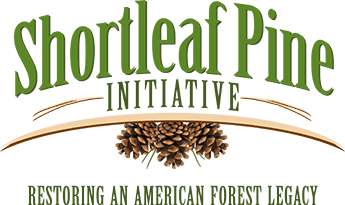|
Shortleaf research, newspaper articles, fact sheets, conference proceedings, literature reviews, and brochures.
RootsTurner, L. M. (1936). A comparison of roots of southern shortleaf pine in three soils. Ecology, 17(4), 649-658. Retrieved from http://www.jstor.org/stable/1932763?seq=1#page_scan_tab_contents  Contrasting the effects of organic matter removal and soil compaction on root biomass of 9-year-old red oak, white oak, and shortleaf pine in a Missouri Ozark forest
Contrasting the effects of organic matter removal and soil compaction on root biomass of 9-year-old red oak, white oak, and shortleaf pine in a Missouri Ozark forest
Ponder Jr, F. (2011). Contrasting the effects of organic matter removal and soil compaction on root biomass of 9-year-old red oak, white oak, and shortleaf pine in a Missouri Ozark forest. Proceedings, 17th central hardwood forest conference; 2010 April 5-7; Lexington, KY; Gen. Tech. Rep. NRS-P-78. Newtown Square, PA: U.S. Department of Agriculture, Forest Service, Northern Research Station: 323-331. Retrieved from https://www.nrs.fs.fed.us/pubs/gtr/gtr-p-78papers/34ponderp78.pdf Hallgren, S., Tauer, C., & Weeks, D. (1993). Cultural, environmental, and genetic factors interact to affect performance of planted shortleaf pine. Forest science, 39(3), 478-498. Retrieved from http://www.ingentaconnect.com/content/saf/fs/1993/00000039/00000003/art00007  Effect of dissolved oxygen concentration on the relative susceptibility of shortleaf and loblolly pine root tips to Phytophthora cinnamomi
Effect of dissolved oxygen concentration on the relative susceptibility of shortleaf and loblolly pine root tips to Phytophthora cinnamomi
Fraedrich, S., & Tainter, F. (1989). Effect of dissolved oxygen concentration on the relative susceptibility of shortleaf and loblolly pine root tips to Phytophthora cinnamomi. Phytopathology, 79(10), 1114-1118. Retrieved from http://www.apsnet.org/publications/phytopathology/backissues/Documents/1989Articles/Phyto79n10_1114.PDF Hallgren, S., & Tauer, C. G. (1987). Effects of Lift Date, Storage, and Family on Early Survival and Root Growth Potential of Shortleaf Pine. Proceedings, Intermountain Forest Nursery Association; 1987 August 10-14; Oklahoma City, OK. General Technical Report RM-151. Fort Collins, CO: U.S. Department of Agriculture, Forest Service, Rocky Mountain Forest and Range Experiment Station: 87-92. Retrieved from https://rngr.net/publications/proceedings/1987/hallgren2.pdf/?searchterm=None  Populations of Phytophthora cinnamomi and Pythium spp. under shortleaf and loblolly pines in littleleaf disease sites
Populations of Phytophthora cinnamomi and Pythium spp. under shortleaf and loblolly pines in littleleaf disease sites
Otrosina, W. J., & Marx, D. H. (1975). Populations of Phytophthora cinnamomi and Pythium spp. under shortleaf and loblolly pines in littleleaf disease sites. Phytopathology, 65(11), 1224-1229. Retrieved from http://www.apsnet.org/publications/phytopathology/backissues/Documents/1975Articles/Phyto65n11_1224.pdf Hallgren, S., & Tauer, C. (1989). Root Growth Potential, First-Year Survival, and Growth of Shortleaf Pine Seedlings Show Effects of Life Date, Storage, and Family. Southern Journal of Applied Forestry, 13(4), 163-169. Retrieved from http://www.ingentaconnect.com/content/saf/sjaf/1989/00000013/00000004/art00003 Harrington, C. A., Brissette, J. C., & Carlson, W. C. (1989). Root system structure in planted and seeded loblolly and shortleaf pine. Forest science, 35(2), 469-480. Retrieved from http://www.ingentaconnect.com/content/saf/fs/1989/00000035/00000002/art00016 Little, S., & Somes, H. A. (1964). Root systems of direct-seeded and variously planted loblolly, shortleaf, and pitch pines. Northeastern Research Station, Research Paper NE-26. Retrieved from http://www.treesearch.fs.fed.us/pubs/3843  Susceptibility of sand pine to Phytophthora cinnamomi
Susceptibility of sand pine to Phytophthora cinnamomi
Ross, E. W., & Marx, D. H. (1972). Susceptibility of sand pine to Phytophthora cinnamomi. Phytopathology, 62, 1197-1200. Retrieved from http://www.apsnet.org/publications/phytopathology/backissues/Documents/1972Articles/Phyto62n10_1197.PDF |

